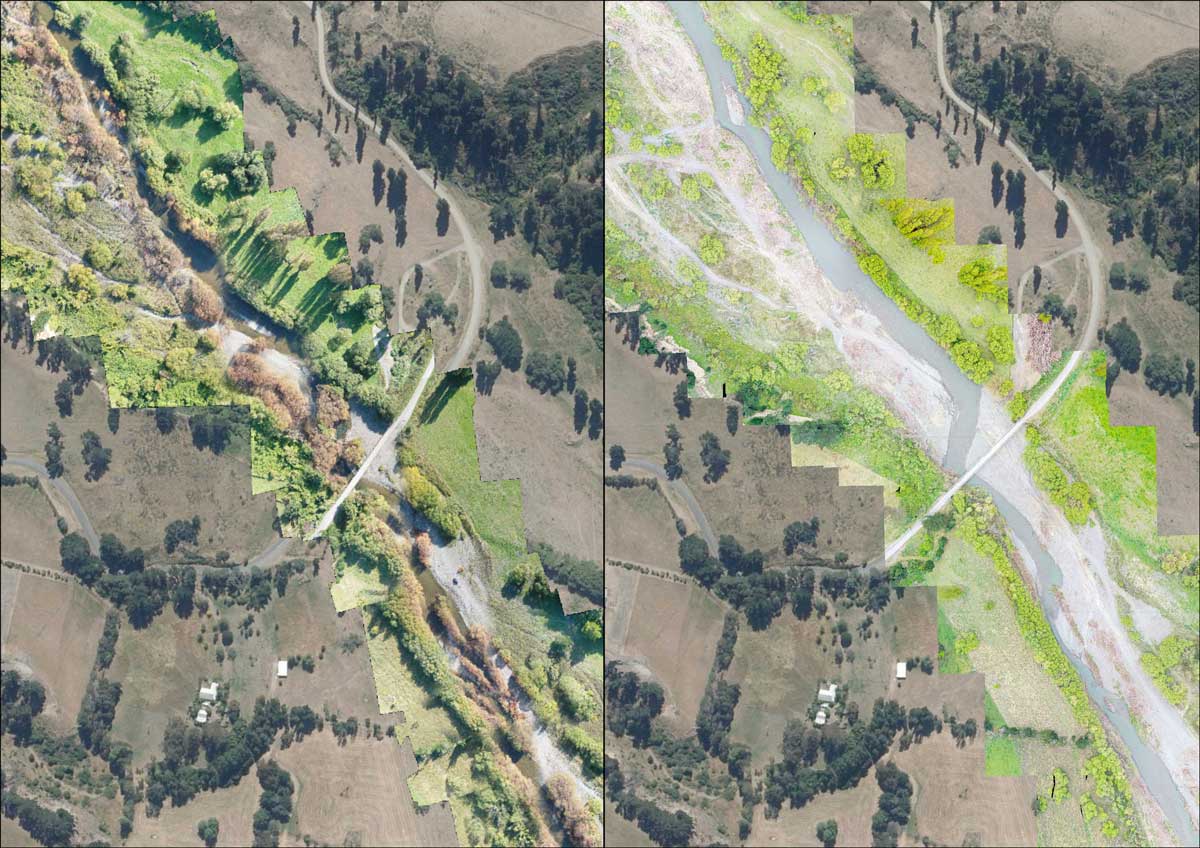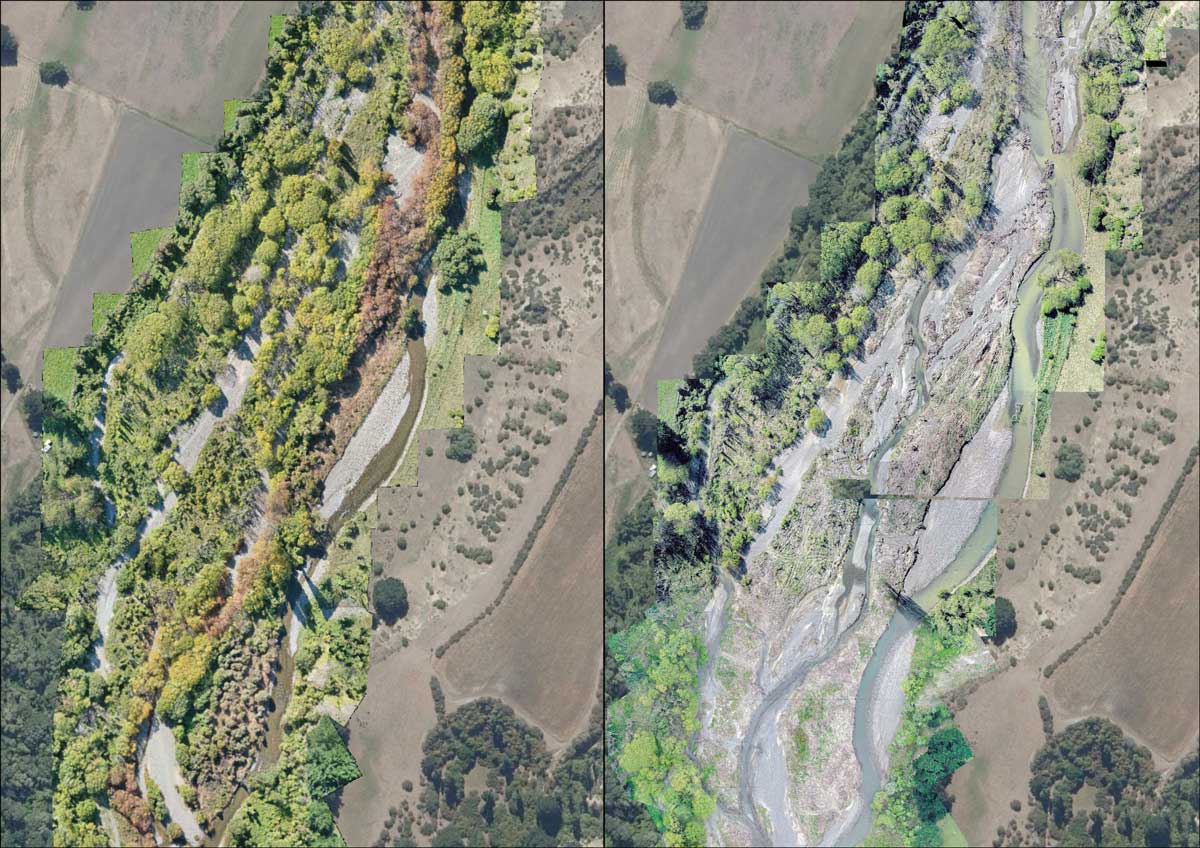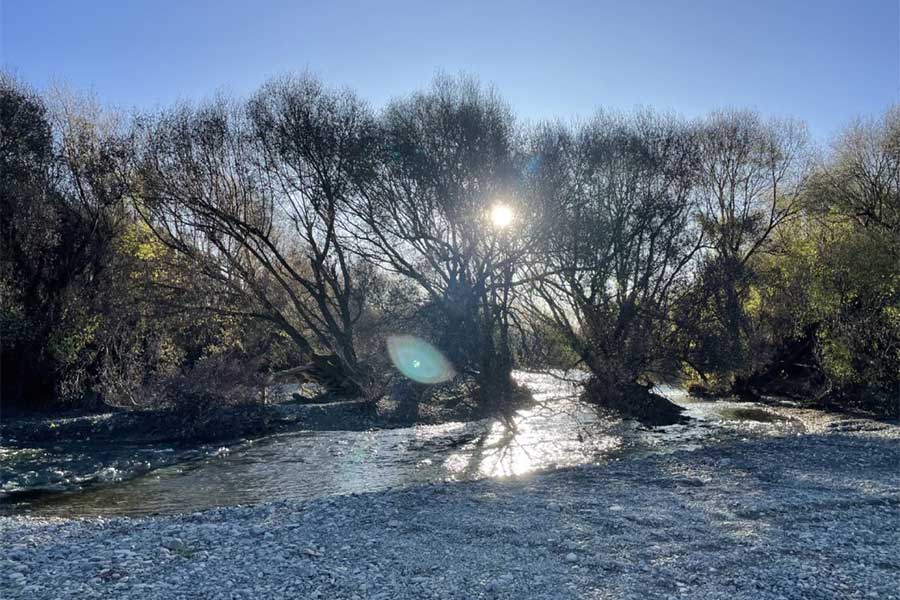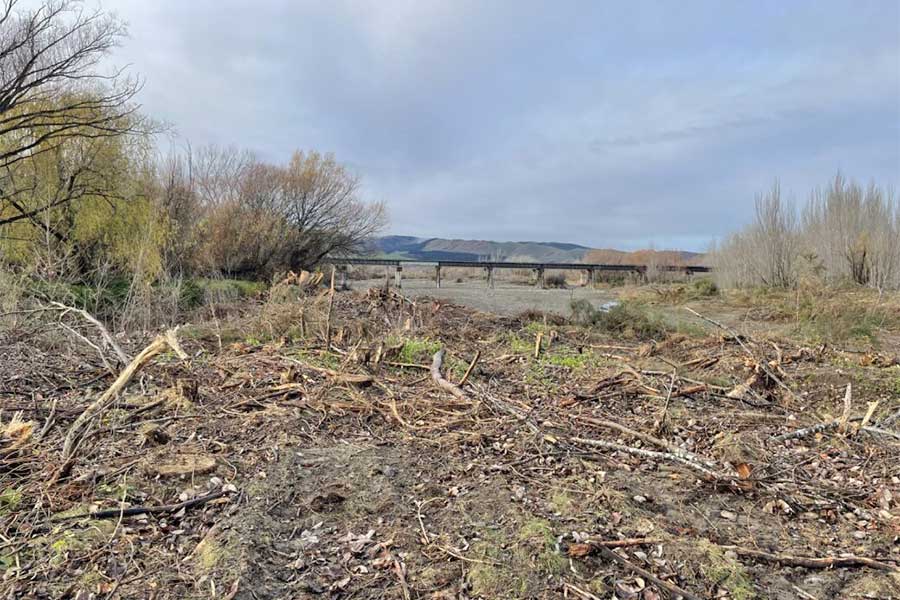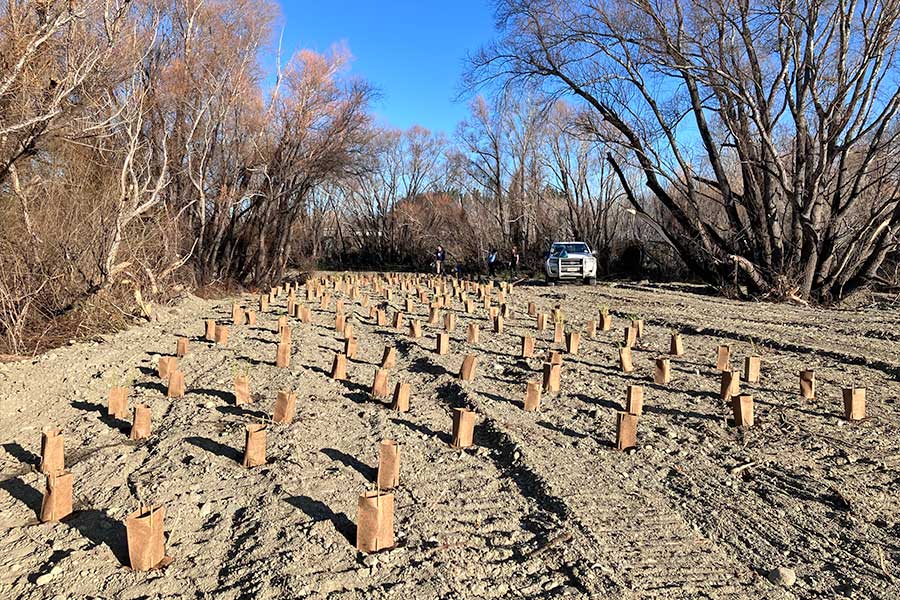We've planted close to 50,000 willows across South Canterbury rivers, increasing safety and resilience for our river communities in the face of climate change.
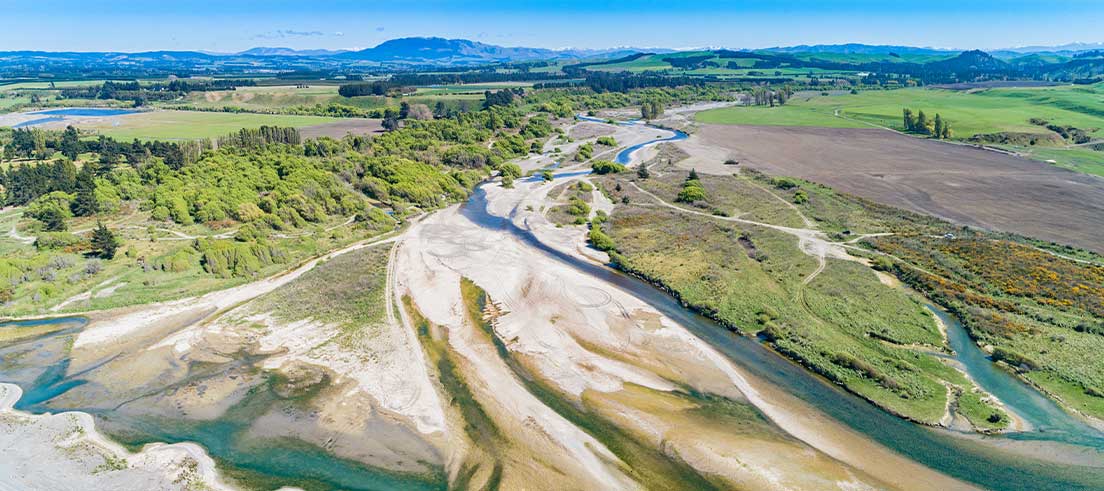
Waipara River restoration brings extensive benefits
The Waipara River has undergone a transformative journey, enhancing flood protection and biodiversity. Find out more about this innovative climate-resilience project.
The Waipara River has long been a jewel in the North Canterbury crown, owing to the natural, cultural, social and economic assets of the river. It is an important resource for mahinga kai, the river mouth and hapua have been ranked as of national to international significance for threatened species by the Department of Conservation (DOC) and it has an extraordinary fossil legacy.
Part-funded by central government’s shovel-ready funding, the Waipara River has been transformed through weed control and planting, from a willow-infested waterway to one with much improved flood protection and biodiversity benefits.
Our regionwide berm transition (BT) project represents a unique and innovative way of increasing the resilience of rivers such as the Waipara River, through targeted weed control and native planting.
Waipara River works reap wider benefits
The Waipara River project involved clearing 15km of mature trees from the riverbed between the coast and State Highway 1. Crack willow, poplar and pine trees were all target species.
The works also provided an opportunity to secure a former landfill site that was at risk of erosion, through rock work and willow planting using sterile clone species.
Environment Canterbury North Canterbury/Ōpukepuke Councillor Claire McKay says the Waipara project is an important programme of work which, at its core, is about keeping the community safe.
"This project has been extremely well received by locals, as it has provided immediate flood protection benefits to the Waipara community as well as broader environmental benefits.
"They are also excited to see the significant change at ground level with the removal of large tracts of invasive willows that were widely considered to be an eyesore," said Councillor Claire McKay.
Non-invasive, short-lived poplar species have also been planted in one area to slow future flood waters.
These plants are supported by native plantings beneath them, to encourage self-seeding and eventual takeover of native plants - a concept that has proven particularly successful on the Waimakariri River berm, with the natives thriving under the protection of the deciduous trees.
Work programme supports climate change resilience
The works align with the Waipara River Management Strategy which was developed with Hurunui District Council (HDC) nearly 10 years ago to provide a framework for managing the Waipara River both now and into the future.
HDC’s Water and Land Coordinator Rima Herber, said aerial photos show how the project is creating a more natural braiding pattern for the Waipara River and Weka Creek, reducing flood and erosion risk.
"This is part of forward planning for climate change resilience, in the face of the likelihood of more frequent and more extreme flood events. It will mean an increased resilience to riverbank flooding, as well as creating sustainable habitat for native biodiversity," she said.
It is a sentiment that is shared by Councillor Claire McKay, who says increased resilience is at front of mind for communities such as Waipara.
"We’ve made a dramatic change to the Waipara River landscape, in terms of flood resilience and also restoring biodiversity values here.
"This project also demonstrates what is possible when central government partners with regional councils to deliver projects that can make a significant difference to flood protection on the ground."
Tree removal supports flood protection
Some willow species and other pest vegetation take up valuable space in the river fairway during times of high flows and can increase flood risk by reducing the flood-carrying capacity of the river. They can also:
- Redirect flows, leading to erosion and out-of-river flooding
- Prevent the natural movement of gravel through the braided river system
- Reduce the amount of habitat available for braided river birds, and provide cover for pest animals that prey on our native birds.
Seeking more investment for flood protection
Climate change-induced events across the country have highlighted the urgent need to increase investment in flood protection infrastructure, so communities are protected now and in the future.
The work is an example of how co-investment from central government can help us accelerate important flood protection work that would otherwise take decades to fund through rates alone, providing better protection to communities from the effects of climate change.
Read about why co-investment is critical to the future of flood protection.
What is increasingly clear is that a shared investment today means lower overall recovery costs and better protection for the environment for current and future generations.
Climate change is not going away, so proactive flood protection projects such as this are the best tools we have in the toolbox right now to protect our communities from flooding.
Related news
Flood protection and enhancing biodiversity is at the heart of a three-year work programme we've been carrying out alongside Waitaha rivers.
Climate change continues to increase the risk of flooding. Leigh Griffiths shares her thoughts about the future of flood protection in Waitaha.

